From the waning years of the 19th century, when electric lighting began to replace gas lighting, electricians have needed the proper tools to perform their jobs. As the decades then passed on, toolmakers would continue to develop the tools initially used and create new ones that would assist electricians to get their work done in a more efficient manner. By the mid-19th century, the Industrial Revolution was in full effect, and many Americans began to earn their living through hands-on jobs in large-scale manufacturing. During this time, ergonomics became more of a consideration in tools and procedures in order to help alleviate the wear and tear that workers were inflicting upon their bodies.
Through the decades that followed, tools have evolved from what we didn’t know we would never need to what we thought could never be. As a 3rd generation electrician, the crank drill that my grandfather used to drill holes to run wires was not quite as beneficial as the electric corded drill that my father used, which pales in comparison to the battery-powered drills that I have used throughout most of my career. There is no doubt that my children and grandchildren will have something even better to use in their jobs. So, if we expect our tools to evolve and perform better for us, why would we expect anything different out of the National Electrical Code® (NEC®) that provides us with the requirements for our installations? Enter NFPA LiNK®.
NFPA LiNK is an innovative, subscription-based digital tool that puts access to 1,400 NFPA® codes and standards right at your fingertips on your computer while sitting at your desk or on a tablet or phone while on the job site. Without cellular coverage or Wi-Fi because you are working deep in a concrete tunnel? No problem. NFPA LiNK has an offline version that will still provide you with access to the codes and standards you need to do your job that you pair to your device. When I came to NFPA after nearly 30 years in the electrical contracting industry, NFPA LiNK was still in development. As a new employee, when I was onboarded and received my first NFPA LiNK assignment, I knew right then that it was a game-changer for the electrical industry. Based on the experience that I have acquired throughout the years as an electrician, electrical contractor, electrical inspector, and electrical apprenticeship instructor, there are a lot of ways I feel that NFPA LiNK can benefit all of those roles – and more.
Accessibility and Flexibility
I have already mentioned the unprecedented access that LiNK provides to NFPA codes and standards. Throughout most of my career, when I was on the job site asking someone where their printed copy of the NEC was, it was one of three places: at the office, in their truck, or in a gang box three floors down. None of which are convenient to access when we need assistance choosing the proper size equipment grounding conductor (EGC) for a wire pull. More often than not, a guess by the worker results in an undersized EGC, which then turns into a failed inspection resulting in unnecessary costs associated with rework and reinspection fees. Or the EGC is oversized and costs the employer more than it should because the larger wire costs more. NFPA LiNK puts the NEC and other useful codes on the job site, like NFPA 70E®, Standard for Electrical Safety in the Workplace®, and NFPA 70B, Standard for Electrical Equipment Maintenance, right at your fingertips on your phone or tablet.
NFPA LiNK also provides flexibility in the codes and standards that you have the ability to access. Working in the Midwest most of my career, it wasn’t uncommon to cross state lines for work. I would quite frequently travel from my home state of Michigan to Ohio and Indiana for specific projects. It was rare that any of the three states were enforcing the same edition of the NEC, let alone all of them. But the only NEC I ever had with me was the one that Michigan was enforcing. With NFPA LiNK, you have access to the most current edition of the NEC as well as several editions before. For example, NFPA LiNK has the most current 2023 edition of the NEC available, as well as another five previous editions dating back to 2008. This means that you have access to whatever edition of the NEC you need for what is being enforced in the area you’re working in.
Real-Time Codebook and Change Indicators
NFPA and its committee members work extremely hard through the standards development process to produce a code or standard that is usable and accurate. But there are still the occasional needs for errata to correct an inaccuracy or a Tentative Interim Amendment (TIA) that make its way through the process and into the code or standard. Once approved, those adjustments are incorporated into any future printings of the code or standard. However, that means that someone with an earlier printing may not have a clear view of those changes. NFPA LiNK changes that. Whenever an errata or TIA is brought into a code or standard, soon after, it is adjusted in “real-time” in NFPA LiNK. This means that using NFPA LiNK for access provides you with the most current version of the code or standard you are accessing.
NFPA LiNK also has a feature that lets you compare the changes that were made between two code editions side-by-side. As an example, if you are using the 2023 edition of the NEC and want to see how the same text looked in the 2020 NEC, you can use the change indicator feature in order to see both simultaneously and compare what has changed. This feature can be very helpful for instructors to visually show the changes to students in classroom settings, like apprenticeship training courses and code update classes.
The reference panel feature within NFPA LiNK is also helpful to instructors. As you likely know, a lesson plan can take you all over the NEC when trying to look at relevant code sections and applicable tables. The reference panel allows you to save specific sections of the code directly to it so it can be accessed while you remain in the specific article you are teaching. For example, if I am teaching how to size motor branch-circuit short-circuit ground-fault protection in Article 430, I also need to reference Section 240.6(A) so I have access to the standard ampere ratings of fuses and circuit breakers. By saving 240.6(A) to my reference panel, I access it while I am working on Article 430 and save myself from having to go from Article 430 to Article 240 and then back to Article 430 again to continue my lecture.
Enhanced Content and NFPA DiRECT™
Many in the electrical industry are familiar with the two printed versions of the NEC: the paperback codebook and the hardcover handbook. The NEC Handbook has additional explanations and images within it that relate to the specific code sections. NFPA LiNK contains enhanced content that is similar to what is found in the printed handbook, not only for the NEC but for all NFPA codes and standards that offer a handbook version, such as NFPA 70E, NFPA 99, Health Care Facilities Code, and NFPA 101, Life Safety Code®. However, the digital nature of NFPA LiNK allows the enhanced content there to expand and evolve beyond the printed handbook capability, such as through the use of videos.
NFPA LiNK also has an internal feature called NFPA DiRECT that allows for navigating the codes and standards based on the specific situation that the user is in. Through NFPA DiRECT, the user can narrow down what they are trying to navigate through the use of filters based upon occupancy, system, space, and equipment. The user has the option of utilizing any or all of the filters to help them navigate to where they need to go. For example, if I am trying to figure out the electrical requirements for wiring a swimming pool, I could just go straight to the “space” filter and select “pool and hot tub area.” As NFPA DiRECT provides the applicable search results, I can then narrow my search down even further into specific areas like pool receptacles, lighting, or equipotential bonding. NFPA DiRECT provides a great way of accessing the code requirements and viewing what visual installation could look like based on the a specific application that the user is in.
Bookmarks, Collections, and Sharing
Is there anything worse than getting your printed copy of the NEC honed to perfection with highlighting and notes to help you in your job, only to have the next code cycle sneak up, another edition of the NEC to be used, and you have to mark it up all over again? NFPA LiNK uses a “have bookmarks, will travel” approach. Once you add a bookmark or note to a specific section of the NEC, it will automatically transfer into newer editions of the code or standard when they become available in NFPA LiNK. You can also use your bookmarks to create collections that are saved within NFPA LiNK. Maybe you want to create a collection that highlights the specific code requirements that apply to a unique job your company is performing, so those in the field can access it. As an instructor, you could use the collection feature to add the code sections that are needed for specific lecture topics. Going on vacation, and someone else needs to cover teaching your class that night? If you are using an NFPA LiNK team or enterprise subscription, you have the ability to share the collections that you have built with your colleagues. You can even share specific code sections with those who do not have an NFPA LiNK subscription. As an example, an electrical inspector could share an NEC section for a code violation that they are citing post-inspection to the company that performed the installation, with a little note to explain. By using the share feature in NFPA LiNK, the inspector can send an email with this information directly to the installer.
The times aren’t changing, they have changed. Continued technology development throughout the better part of two centuries has allowed us to improve upon the speed and accuracy of our electrical installations tremendously. NFPA LiNK is a tool that everyone in the electrical industry needs in their tool belt. Established workers will come to love it and new workers, with their strong grasp on technology, will come to expect it. All things considered; I still stand by my initial thoughts of when NFPA LiNK was first explained to me as a new NFPA employee – it’s a game-changer!
For more information about the NFPA LiNK™, including accessing a FREE trial for first time users, please visit www.nfpa.org/LiNK.
Important Notice: Any opinion expressed in this column is the personal opinion of the author and does not necessarily represent the official position of NFPA or its Technical Committees. In addition, this piece is neither intended, nor should it be relied upon, to provide professional consultation or services. Images courtesy of NFPA.






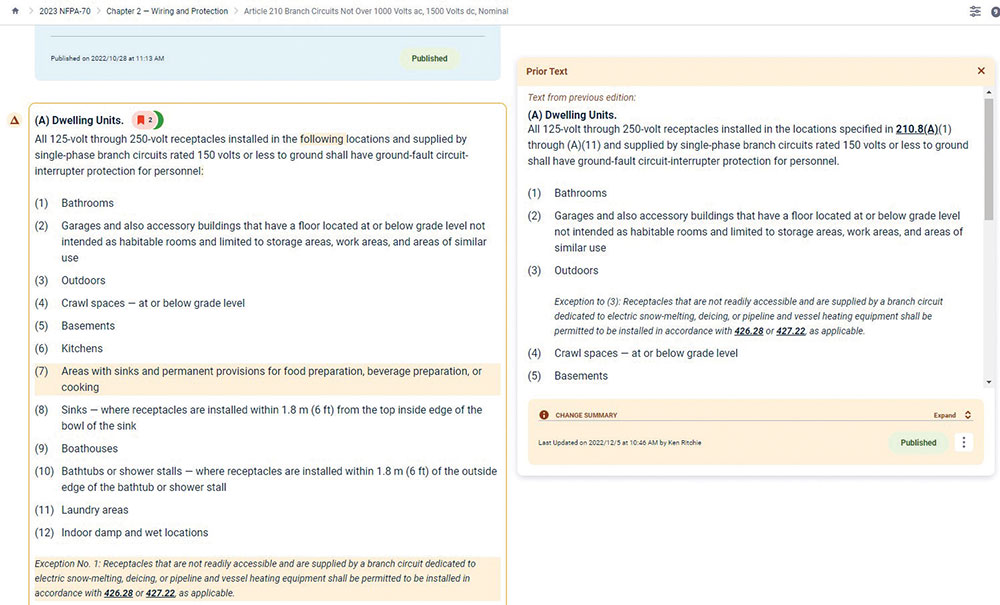
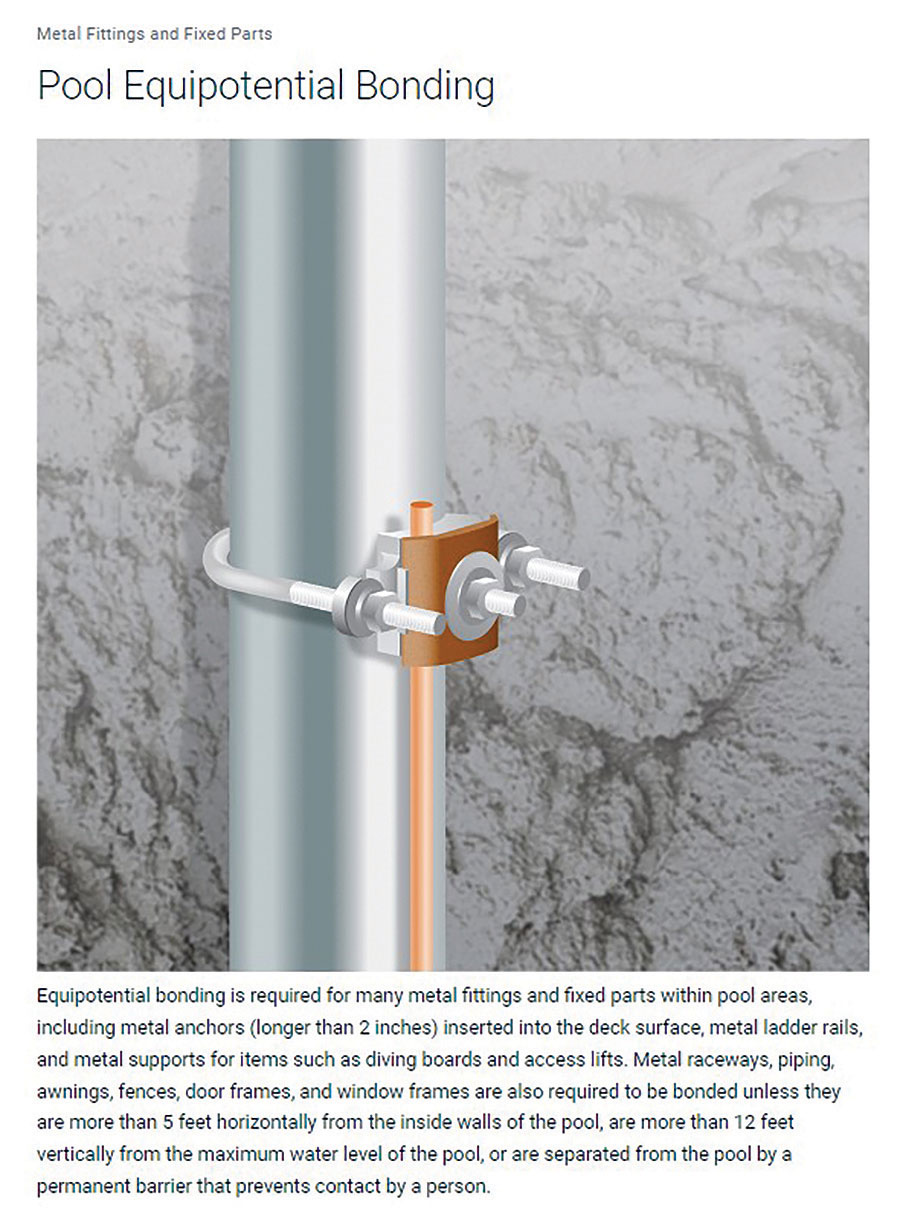

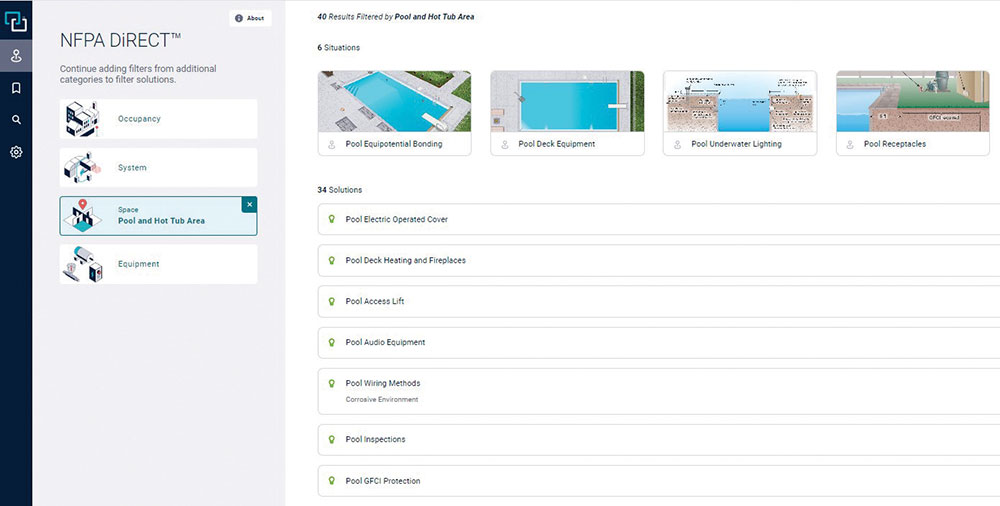
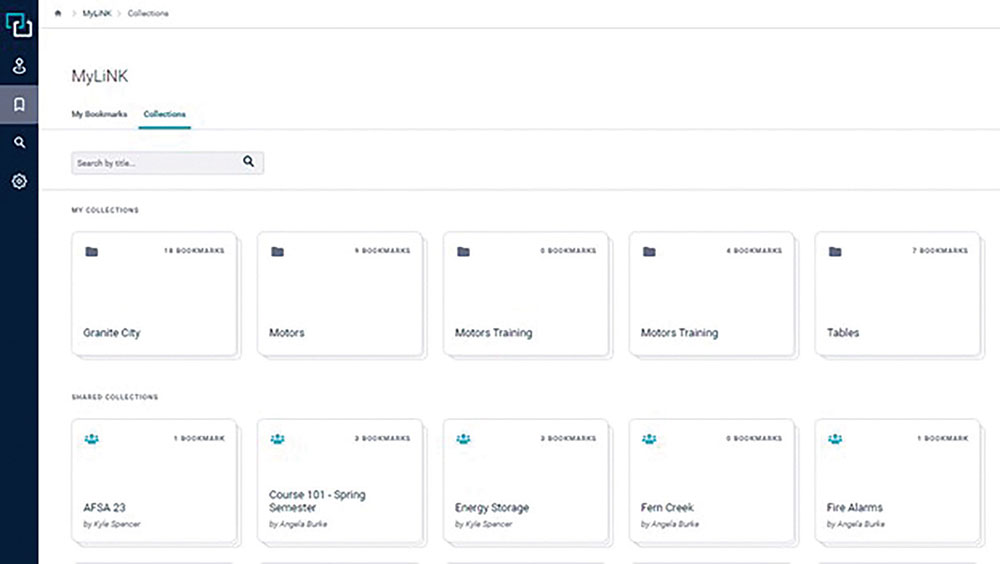
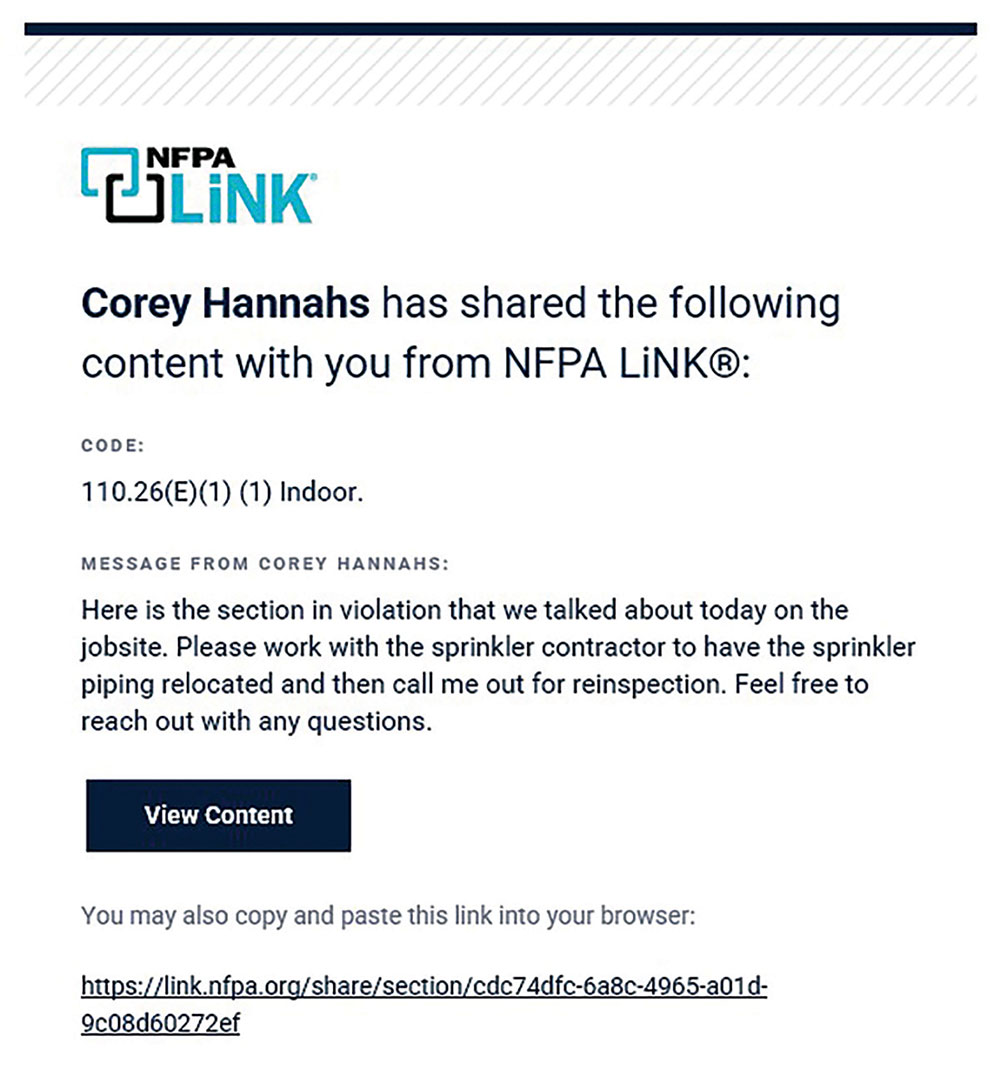









Find Us on Socials